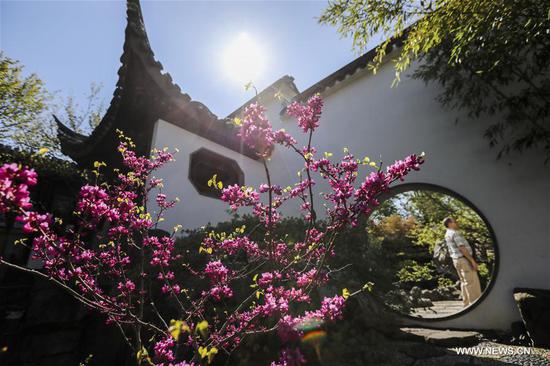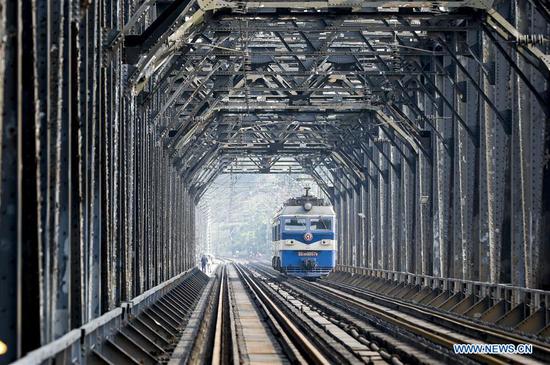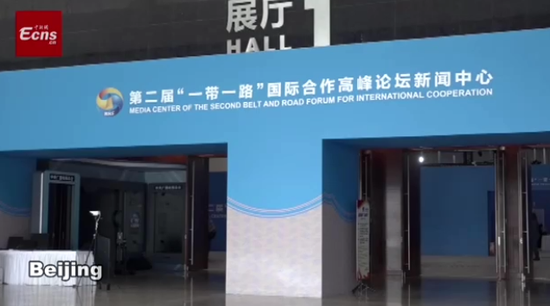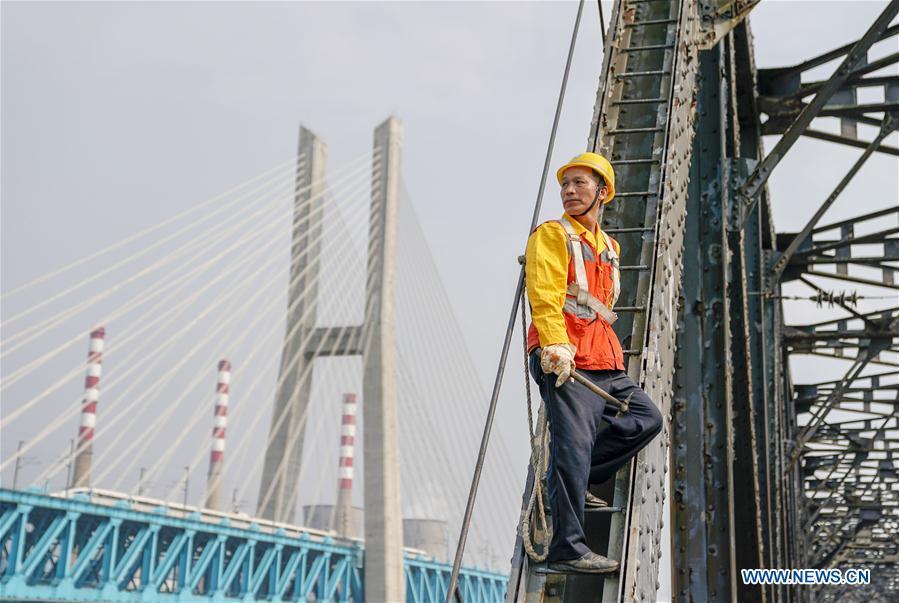
Tang Jinhua looks at the new Baishatuo Yangtze River railway bridge in Jiangjin of southwest China's Chongqing Municipality, April 23, 2019. The previous Baishatuo Yangtze River railway bridge, completed in 1959, will stop service after April 24. All trains will run on the new double decker steel truss cable stay railway bridge after that day. The new bridge has 4 tracks on the upper deck for passenger trains with a designed speed of 200 kilometers per hour and 2 tracks on the lower deck for cargo trains with the designed speed of 120 kilometers per hour. (Xinhua/Liu Chan)
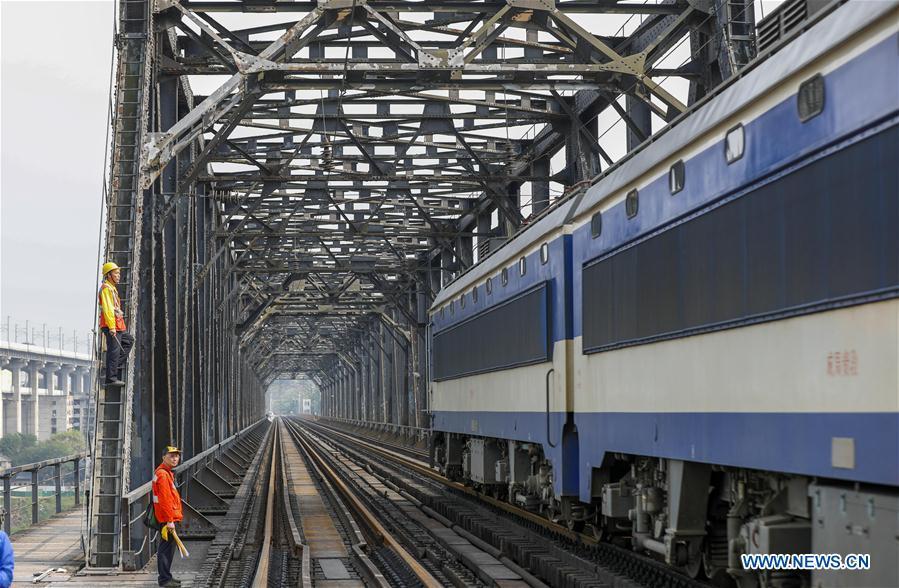
Workers wait for an electrical locomotive to pass on the previous Baishatuo Yangtze River railway bridge in Jiangjin of southwest China's Chongqing Municipality, April 23, 2019. The previous Baishatuo Yangtze River railway bridge, completed in 1959, will stop service after April 24. All trains will run on the new double decker steel truss cable stay railway bridge after that day. The new bridge has 4 tracks on the upper deck for passenger trains with a designed speed of 200 kilometers per hour and 2 tracks on the lower deck for cargo trains with the designed speed of 120 kilometers per hour. (Xinhua/Liu Chan)
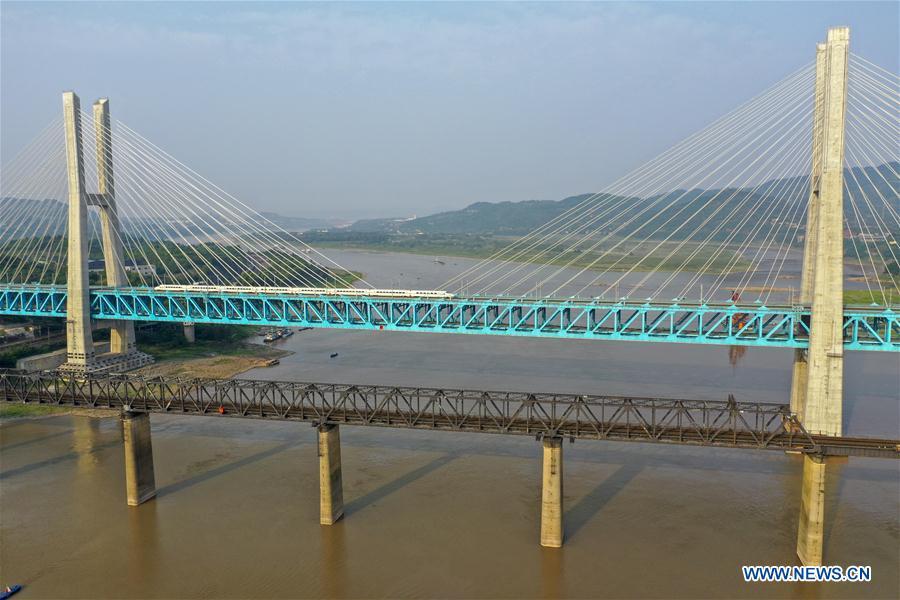
Aerial photo taken on April 23, 2019 shows a bullet train running on the new Baishatuo Yangtze River railway bridge (Back) in Jiangjin of southwest China's Chongqing Municipality. The previous Baishatuo Yangtze River railway bridge, completed in 1959, will stop service after April 24. All trains will run on the new double decker steel truss cable stay railway bridge after that day. The new bridge has 4 tracks on the upper deck for passenger trains with a designed speed of 200 kilometers per hour and 2 tracks on the lower deck for cargo trains with the designed speed of 120 kilometers per hour. (Xinhua/Liu Chan)
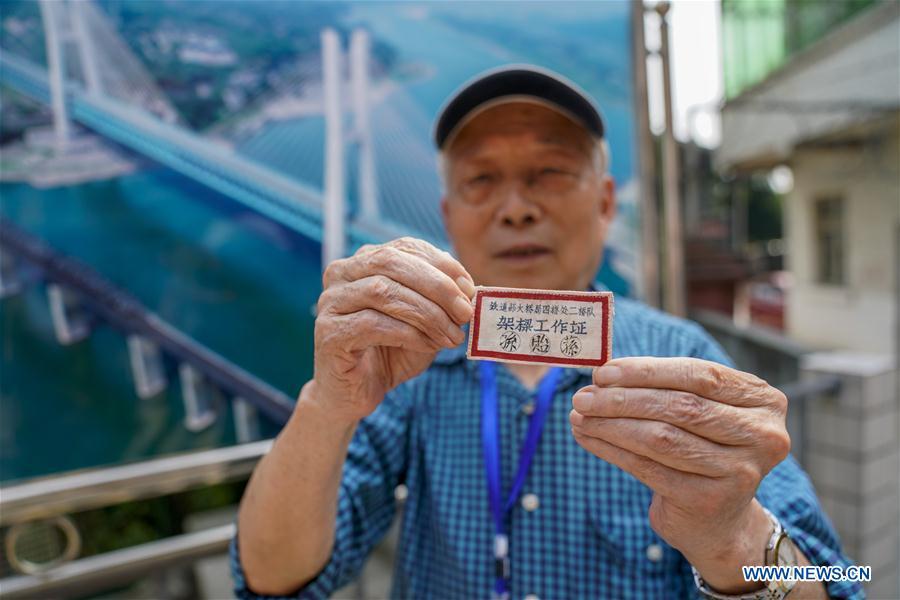
Sun Yisun, a former builder of the previous Baishatuo Yangtze River railway bridge, shows his old employee's card in Jiangjin of southwest China's Chongqing Municipality, April 23, 2019. The previous Baishatuo Yangtze River railway bridge, completed in 1959, will stop service after April 24. All trains will run on the new double decker steel truss cable stay railway bridge after that day. The new bridge has 4 tracks on the upper deck for passenger trains with a designed speed of 200 kilometers per hour and 2 tracks on the lower deck for cargo trains with the designed speed of 120 kilometers per hour. (Xinhua/Liu Chan)
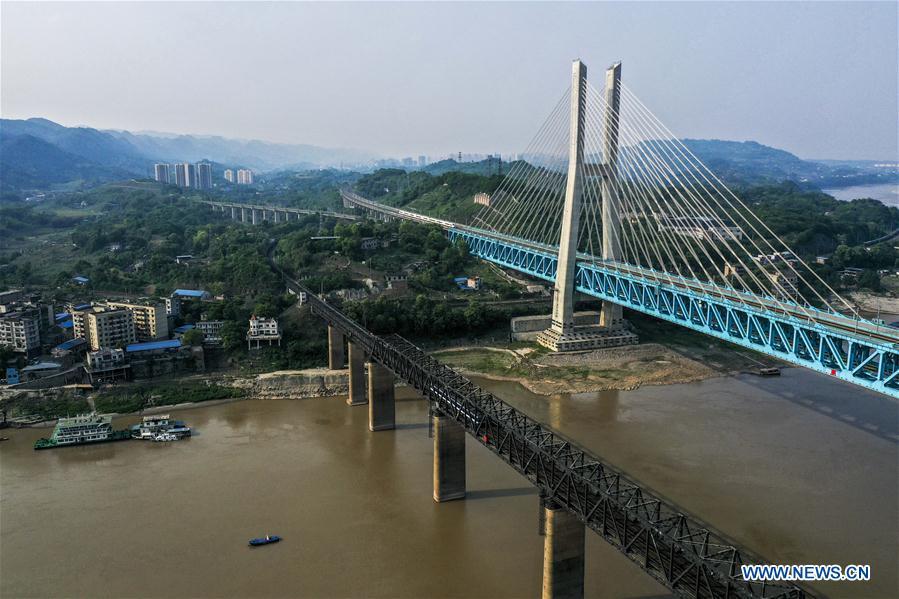
Aerial photo taken on April 23, 2019 shows the previous (L) and the new Baishatuo Yangtze River railway bridge in Jiangjin of southwest China's Chongqing Municipality. The previous Baishatuo Yangtze River railway bridge, completed in 1959, will stop service after April 24. All trains will run on the new double decker steel truss cable stay railway bridge after that day. The new bridge has 4 tracks on the upper deck for passenger trains with a designed speed of 200 kilometers per hour and 2 tracks on the lower deck for cargo trains with the designed speed of 120 kilometers per hour. (Xinhua/Liu Chan)
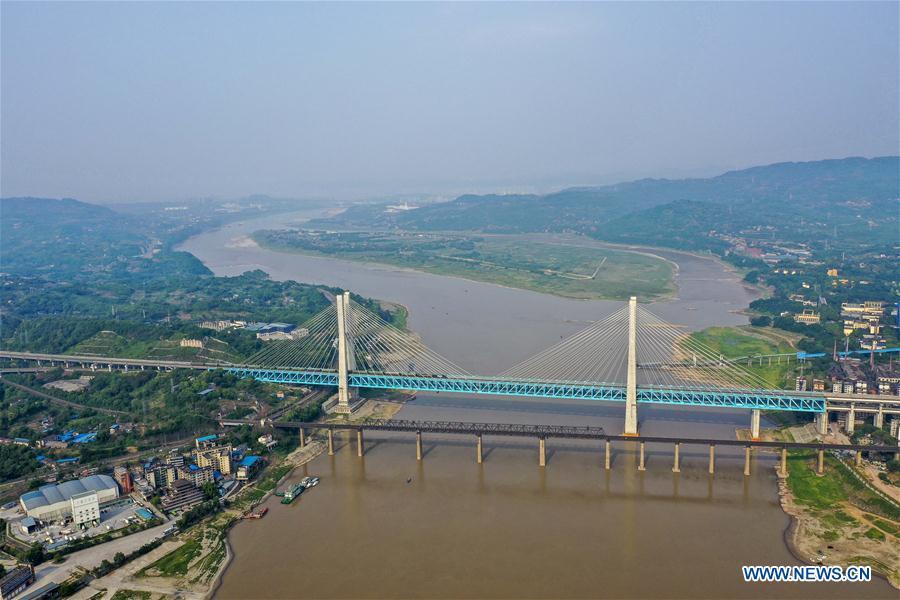
Aerial photo taken on April 23, 2019 shows the previous (Front) and the new Baishatuo Yangtze River railway bridge in Jiangjin of southwest China's Chongqing Municipality. The previous Baishatuo Yangtze River railway bridge, completed in 1959, will stop service after April 24. All trains will run on the new double decker steel truss cable stay railway bridge after that day. The new bridge has 4 tracks on the upper deck for passenger trains with a designed speed of 200 kilometers per hour and 2 tracks on the lower deck for cargo trains with the designed speed of 120 kilometers per hour. (Xinhua/Liu Chan)
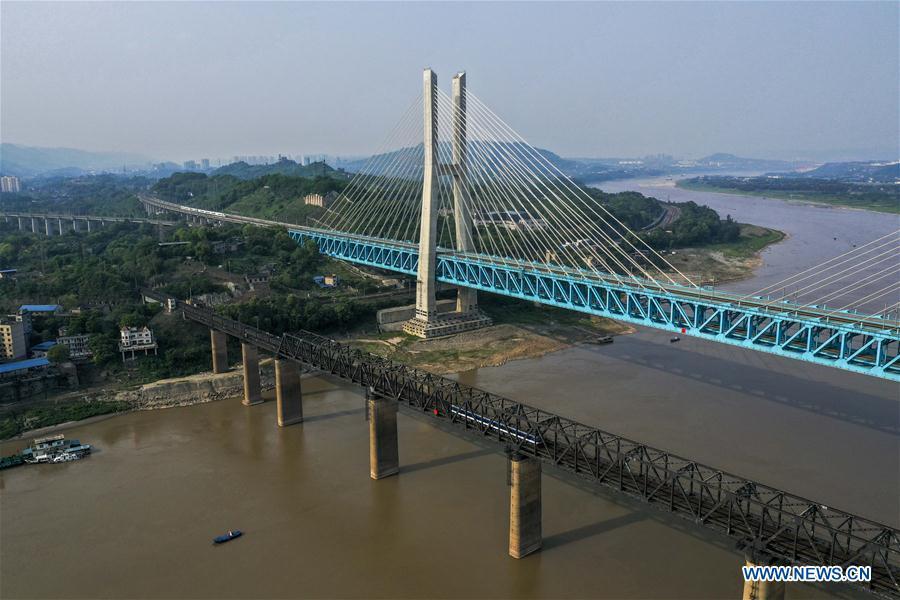
Aerial photo taken on April 23, 2019 shows the previous (L) and the new Baishatuo Yangtze River railway bridge in Jiangjin of southwest China's Chongqing Municipality. The previous Baishatuo Yangtze River railway bridge, completed in 1959, will stop service after April 24. All trains will run on the new double decker steel truss cable stay railway bridge after that day. The new bridge has 4 tracks on the upper deck for passenger trains with a designed speed of 200 kilometers per hour and 2 tracks on the lower deck for cargo trains with the designed speed of 120 kilometers per hour. (Xinhua/Liu Chan)
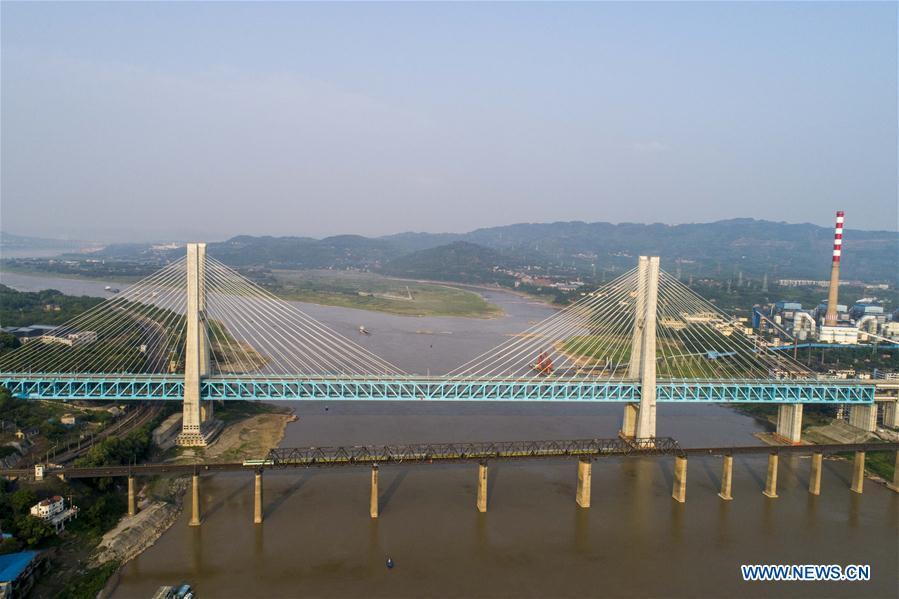
Aerial photo shows the last train running on the previous Baishatuo Yangtze River railway bridge (Front) in Jiangjin of southwest China's Chongqing Municipality, on April 23, 2019. The previous Baishatuo Yangtze River railway bridge, completed in 1959, will stop service after April 24. All trains will run on the new double decker steel truss cable stay railway bridge after that day. The new bridge has 4 tracks on the upper deck for passenger trains with a designed speed of 200 kilometers per hour and 2 tracks on the lower deck for cargo trains with the designed speed of 120 kilometers per hour. (Xinhua/Liu Chan)
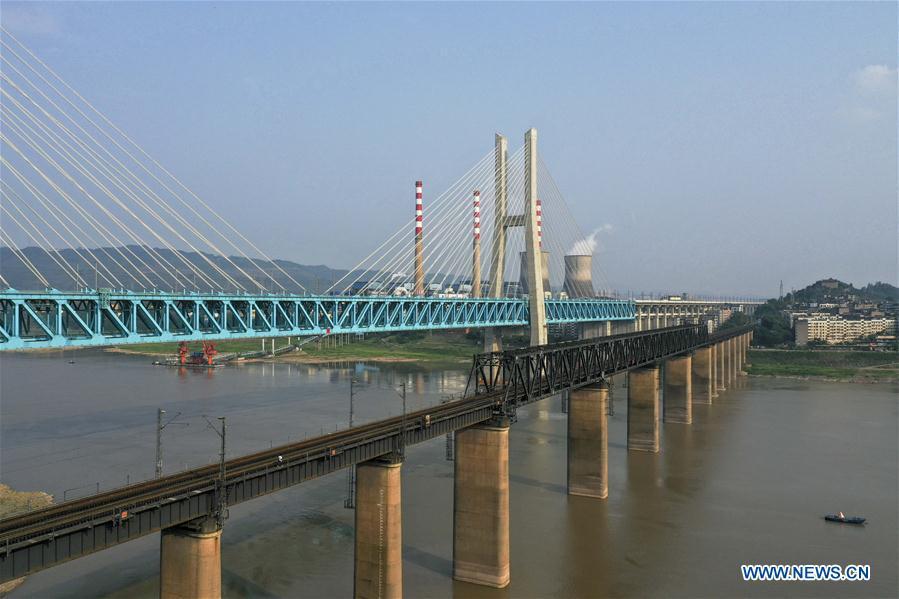
Aerial photo taken on April 23, 2019 shows the previous (R) and the new Baishatuo Yangtze River railway bridge in Jiangjin of southwest China's Chongqing Municipality. The previous Baishatuo Yangtze River railway bridge, completed in 1959, will stop service after April 24. All trains will run on the new double decker steel truss cable stay railway bridge after that day. The new bridge has 4 tracks on the upper deck for passenger trains with a designed speed of 200 kilometers per hour and 2 tracks on the lower deck for cargo trains with the designed speed of 120 kilometers per hour. (Xinhua/Liu Chan)
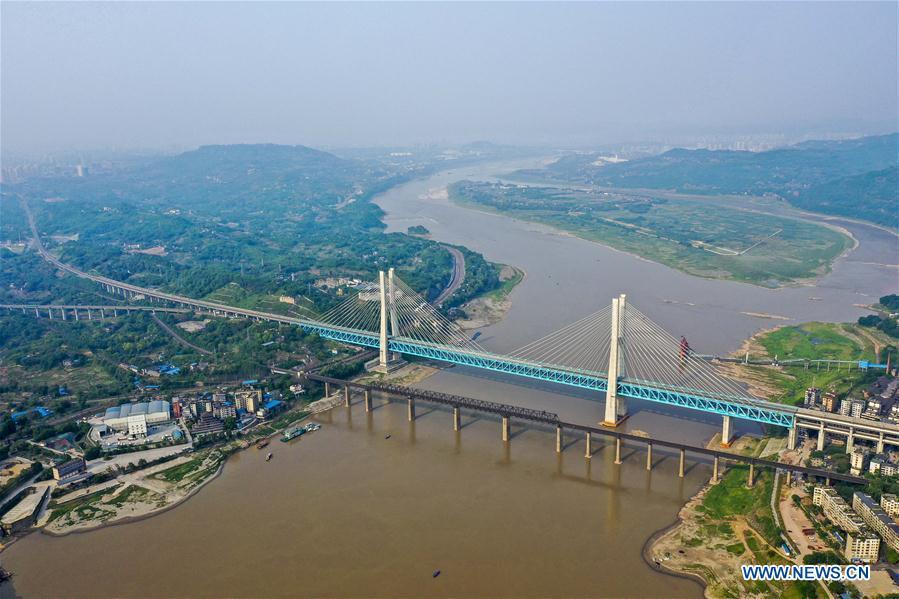
Aerial photo taken on April 23, 2019 shows the previous (Front) and the new Baishatuo Yangtze River railway bridge in Jiangjin of southwest China's Chongqing Municipality. The previous Baishatuo Yangtze River railway bridge, completed in 1959, will stop service after April 24. All trains will run on the new double decker steel truss cable stay railway bridge after that day. The new bridge has 4 tracks on the upper deck for passenger trains with a designed speed of 200 kilometers per hour and 2 tracks on the lower deck for cargo trains with the designed speed of 120 kilometers per hour. (Xinhua/Liu Chan)
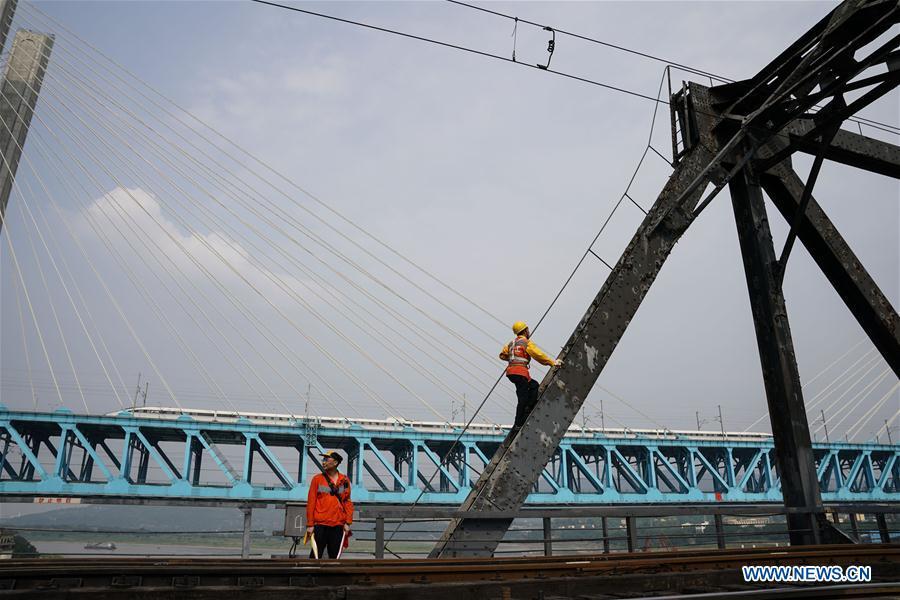
Workers of China Railway Chengdu Group Co., Ltd. conduct final check on the previous Baishatuo Yangtze River railway bridge in Jiangjin of southwest China's Chongqing Municipality, April 23, 2019. The previous Baishatuo Yangtze River railway bridge, completed in 1959, will stop service after April 24. All trains will run on the new double decker steel truss cable stay railway bridge after that day. The new bridge has 4 tracks on the upper deck for passenger trains with a designed speed of 200 kilometers per hour and 2 tracks on the lower deck for cargo trains with the designed speed of 120 kilometers per hour. (Xinhua/Liu Chan)
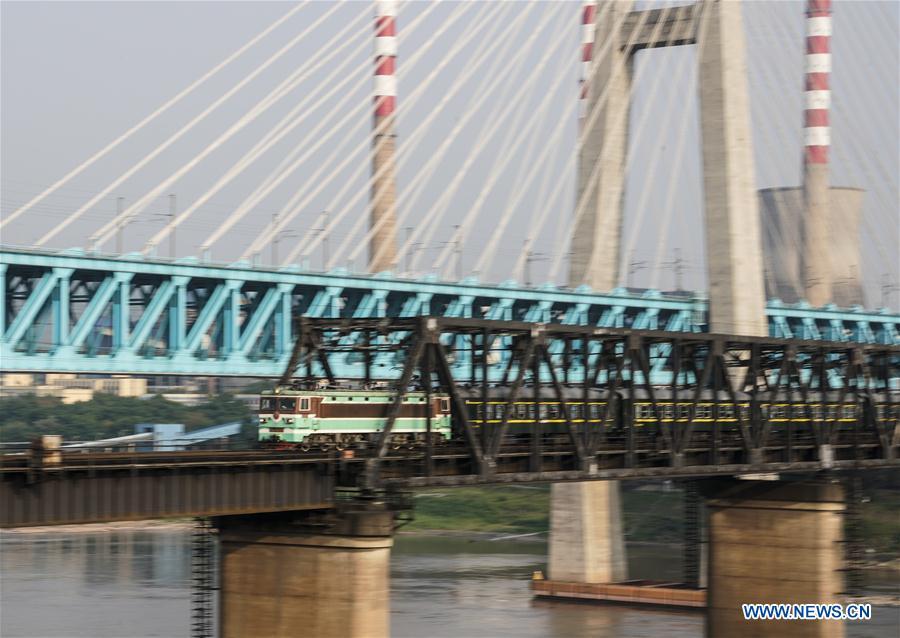
The last train runs on the previous Baishatuo Yangtze River railway bridge in Jiangjin of southwest China's Chongqing Municipality, April 23, 2019. The previous Baishatuo Yangtze River railway bridge, completed in 1959, will stop service after April 24. All trains will run on the new double decker steel truss cable stay railway bridge after that day. The new bridge has 4 tracks on the upper deck for passenger trains with a designed speed of 200 kilometers per hour and 2 tracks on the lower deck for cargo trains with the designed speed of 120 kilometers per hour. (Xinhua/Liu Chan)
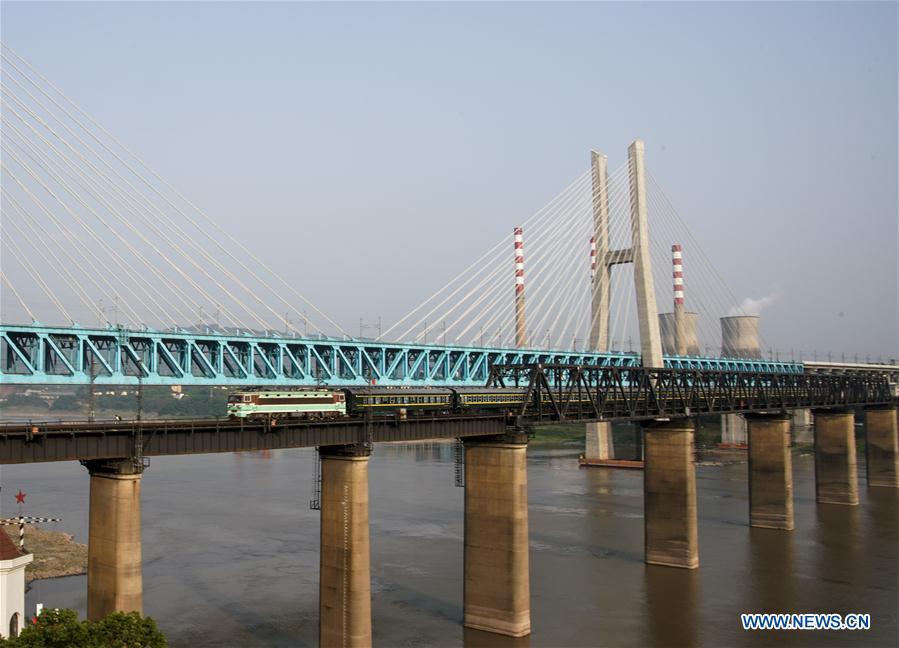
The last train runs on the previous Baishatuo Yangtze River railway bridge in Jiangjin of southwest China's Chongqing Municipality, April 23, 2019. The previous Baishatuo Yangtze River railway bridge, completed in 1959, will stop service after April 24. All trains will run on the new double decker steel truss cable stay railway bridge after that day. The new bridge has 4 tracks on the upper deck for passenger trains with a designed speed of 200 kilometers per hour and 2 tracks on the lower deck for cargo trains with the designed speed of 120 kilometers per hour. (Xinhua/Liu Chan)
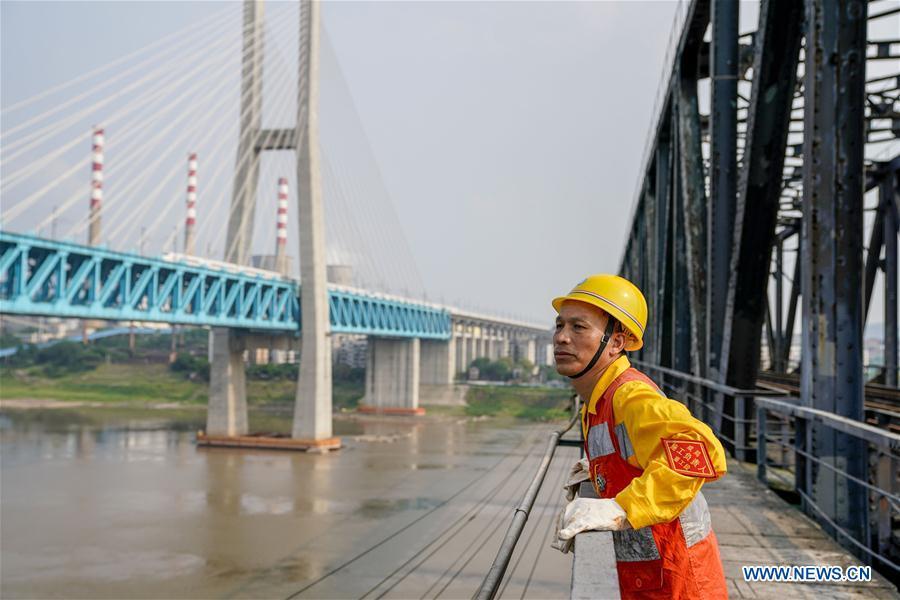
Tang Jinhua looks at the new Baishatuo Yangtze River railway bridge in Jiangjin of southwest China's Chongqing Municipality, April 23, 2019. The previous Baishatuo Yangtze River railway bridge, completed in 1959, will stop service after April 24. All trains will run on the new double decker steel truss cable stay railway bridge after that day. The new bridge has 4 tracks on the upper deck for passenger trains with a designed speed of 200 kilometers per hour and 2 tracks on the lower deck for cargo trains with the designed speed of 120 kilometers per hour. (Xinhua/Liu Chan)
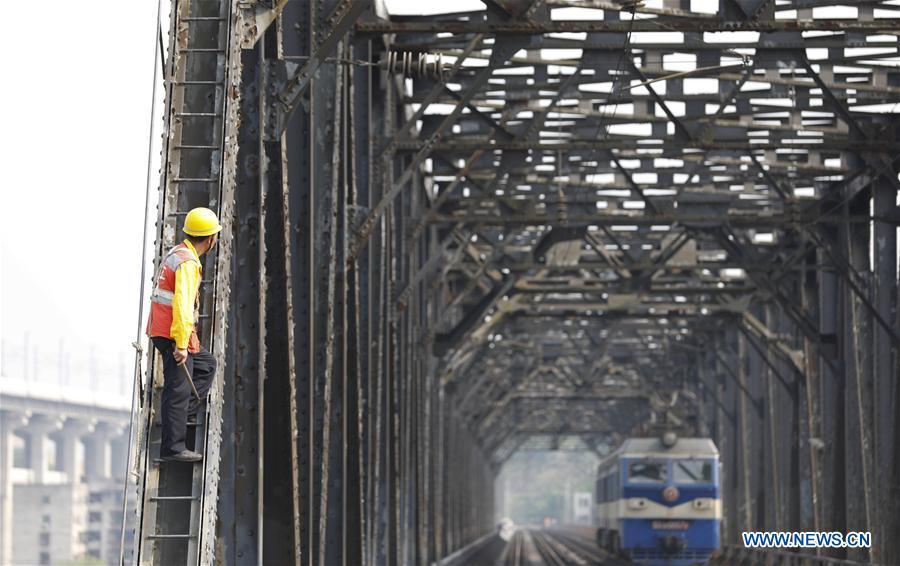
A worker waits for an electrical locomotive to pass on the previous Baishatuo Yangtze River railway bridge in Jiangjin of southwest China's Chongqing Municipality, April 23, 2019. The previous Baishatuo Yangtze River railway bridge, completed in 1959, will stop service after April 24. All trains will run on the new double decker steel truss cable stay railway bridge after that day. The new bridge has 4 tracks on the upper deck for passenger trains with a designed speed of 200 kilometers per hour and 2 tracks on the lower deck for cargo trains with the designed speed of 120 kilometers per hour. (Xinhua/Liu Chan)
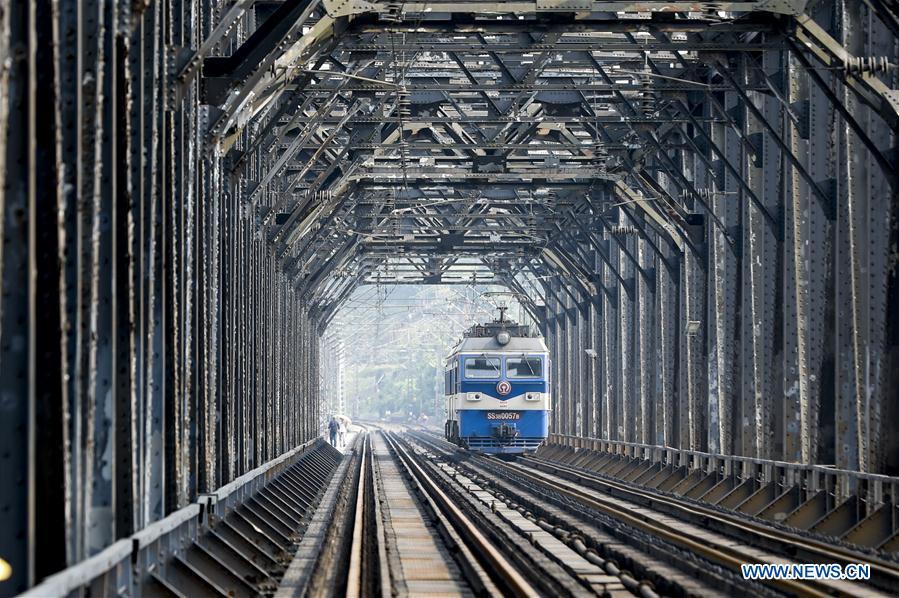
An electrical locomotive runs on the previous Baishatuo Yangtze River railway bridge in Jiangjin of southwest China's Chongqing Municipality, April 23, 2019. The previous Baishatuo Yangtze River railway bridge, completed in 1959, will stop service after April 24. All trains will run on the new double decker steel truss cable stay railway bridge after that day. The new bridge has 4 tracks on the upper deck for passenger trains with a designed speed of 200 kilometers per hour and 2 tracks on the lower deck for cargo trains with the designed speed of 120 kilometers per hour. (Xinhua/Liu Chan)











